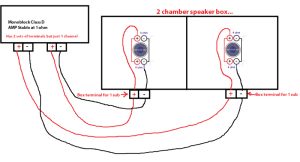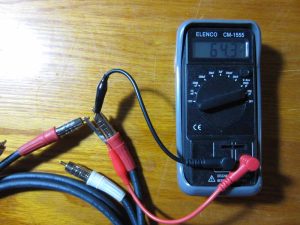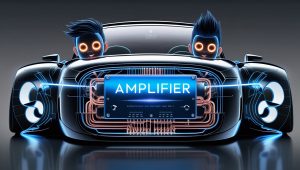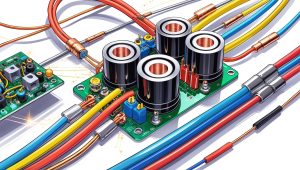This article explores methods for bypassing protection mode on Accelerated Mobile Pages (AMP). It’s crucial to understand that circumventing security measures should only be undertaken with explicit permission from the website owner or for legitimate security research purposes. Unauthorized attempts can lead to legal repercussions and damage to the website. This information is provided for educational purposes only and should not be used for malicious activities.
Contents
- Understanding AMP’s Protection Mode
- Identifying Protection Mode Limitations
- Assessing Your Specific AMP Setup
- Evaluating Potential Risks & Consequences
- Exploring Alternative Access Methods
- Utilizing Developer Tools for Inspection
- Modifying AMP Configuration Files (Advanced)
- Employing Custom JavaScript Injections (Advanced)
- Bypassing Protection via Network Interception
- Post-Bypass Security Considerations
Understanding AMP’s Protection Mode
AMP’s protection mode, implemented through various techniques, aims to safeguard websites from malicious scripts and unauthorized modifications. It often restricts access to certain functionalities, preventing the execution of potentially harmful code that could compromise the website’s integrity or user data. This protection is achieved through sandboxing, limited JavaScript execution, and controlled resource loading. Understanding how these mechanisms work is the first step in considering any bypass attempts.
These protective measures are essential for maintaining the integrity and security of AMP pages. They prevent common attacks like cross-site scripting (XSS) and other injection vulnerabilities. However, the level of protection varies depending on the specific implementation and the website’s configuration. Therefore, a thorough understanding of the website’s specific AMP setup is crucial before attempting any bypass.
Identifying Protection Mode Limitations
Protection mode isn’t impenetrable. Limitations often arise from inconsistencies in implementation, reliance on specific browser features, or oversights in the security design. For instance, a poorly implemented sandbox might allow escape routes, or a reliance on a specific browser’s JavaScript engine might create vulnerabilities in other environments. Identifying these weaknesses is key to finding bypass methods.
These limitations can be exploited to gain unauthorized access or modify the AMP page’s behavior. However, exploiting these weaknesses requires a deep understanding of web security concepts, including JavaScript, HTTP requests, and browser functionality. Simply searching for generic “AMP bypass” solutions is unlikely to yield effective results; a tailored approach is necessary.
Assessing Your Specific AMP Setup
Before attempting any bypass, it’s vital to analyze the target AMP page’s structure and security measures. Inspect the source code to identify the specific technologies and frameworks used, noting any custom scripts or modifications. This detailed analysis will help identify potential vulnerabilities.
This assessment involves examining the AMP HTML, analyzing the network requests, and inspecting the JavaScript code that’s being executed. Tools like the browser’s developer console and network inspector are invaluable for this process. Understanding the specific implementation of protection mode on the target website is critical for selecting the appropriate bypass method.
Evaluating Potential Risks & Consequences
Attempting to bypass AMP protection carries significant risks. Unauthorized access can lead to legal repercussions, including copyright infringement and potential criminal charges. Furthermore, it can damage the website’s integrity, compromise user data, and disrupt its functionality. Consider the ethical and legal implications carefully.
The consequences can extend beyond legal penalties. Bypassing security measures can introduce vulnerabilities, making the website susceptible to further attacks. It’s essential to weigh the potential benefits against the significant risks involved before attempting any bypass. A thorough risk assessment is crucial before proceeding.
Exploring Alternative Access Methods
Before resorting to potentially harmful bypass techniques, explore legitimate alternatives. Check the website’s documentation for official methods of accessing restricted content or functionalities. Contact the website’s administrator to inquire about accessing specific features or data.
Consider if the desired access is truly necessary. Often, the need to bypass protection stems from a misunderstanding of the website’s functionality. Clarifying the requirements and exploring alternative means of achieving the desired outcome is often a safer and more effective approach.
Utilizing Developer Tools for Inspection
Browser developer tools provide powerful capabilities for inspecting AMP pages. Use the network tab to analyze HTTP requests and responses, identify resource loading patterns, and spot potential vulnerabilities. The console allows for dynamic code execution and debugging, assisting in understanding the AMP’s behavior.
The “Elements” tab allows you to inspect the HTML structure and identify elements that might be manipulated or exploited. By carefully analyzing the network traffic and the executed JavaScript code, you can gain valuable insights into the AMP’s protection mechanisms and potentially identify weaknesses. Remember to use these tools ethically and responsibly.
Modifying AMP Configuration Files (Advanced)
Modifying AMP configuration files is an advanced technique requiring deep technical expertise and access to the server-side configuration. This involves altering settings related to JavaScript execution, resource loading, and sandbox configurations. This should only be done with explicit permission from the website owner.
This method is generally not feasible for users lacking server-side access. Incorrect modifications can severely disrupt the website’s functionality and introduce security risks. This approach necessitates a comprehensive understanding of AMP architecture and server-side configurations. Unauthorized modification is strongly discouraged.
Employing Custom JavaScript Injections (Advanced)
Injecting custom JavaScript code to bypass protection is a highly advanced and risky technique. This involves injecting code that interacts with the AMP page, potentially overriding security measures or manipulating its behavior. This is extremely risky and should only be attempted by experienced security professionals for legitimate purposes.
Successful injection requires a profound understanding of JavaScript, AMP’s security model, and the target website’s specific implementation. Any attempt to inject malicious code is unethical and illegal. This method is not recommended unless you have extensive experience in web security and ethical hacking.
Bypassing Protection via Network Interception
Network interception tools, such as proxies, can be used to intercept and modify HTTP requests and responses between the browser and the server. This allows for manipulating AMP responses before they reach the browser, potentially bypassing certain protection mechanisms. This requires specialized knowledge and tools.
However, this method is also ethically problematic and often violates terms of service. It’s crucial to have explicit permission before attempting network interception. Furthermore, it’s important to be aware of the potential legal consequences of unauthorized network manipulation.
Post-Bypass Security Considerations
After attempting a bypass (for legitimate purposes), it’s crucial to restore the website’s security to its original state. This includes reverting any modifications made to configuration files or injected code. Failing to do so can leave the website vulnerable to exploitation.
Moreover, it’s important to document the vulnerabilities discovered and report them responsibly to the website owner or relevant authorities. This helps improve the website’s security and prevents potential misuse by others. Responsible disclosure is a crucial aspect of ethical security research.
Bypassing AMP protection mode requires a deep understanding of web security and carries significant risks. The methods described in this article are provided for educational purposes only and should not be used for malicious activities. Always prioritize ethical considerations and obtain appropriate permissions before attempting any bypass techniques. Remember that unauthorized access is illegal and can have serious consequences.






